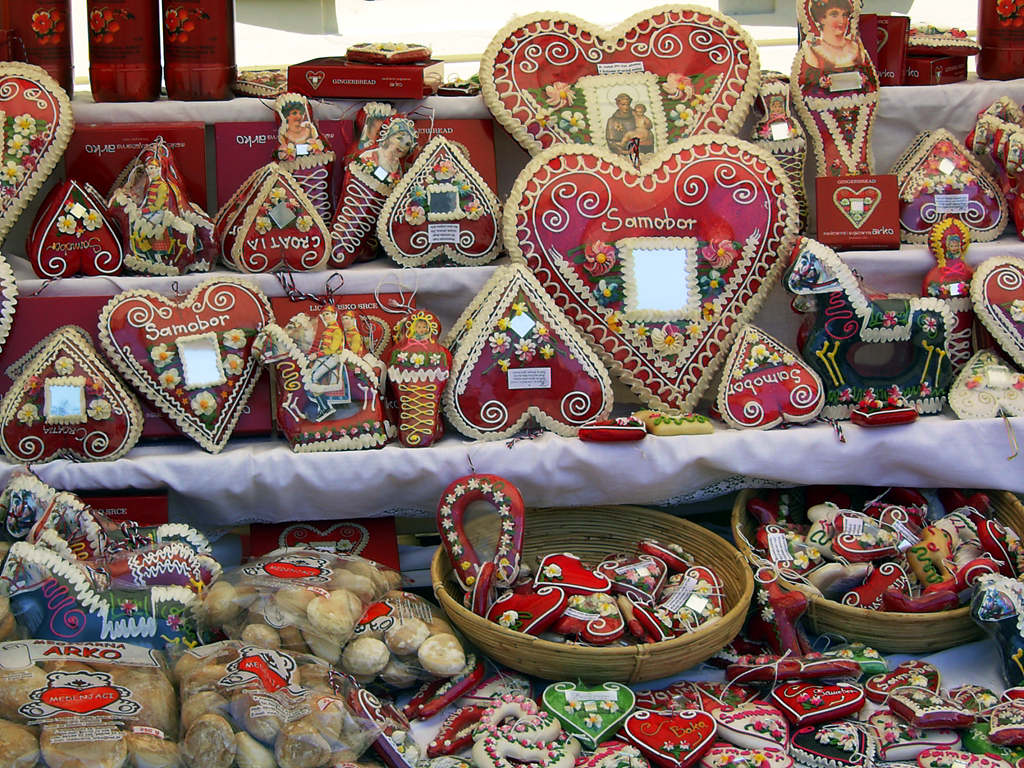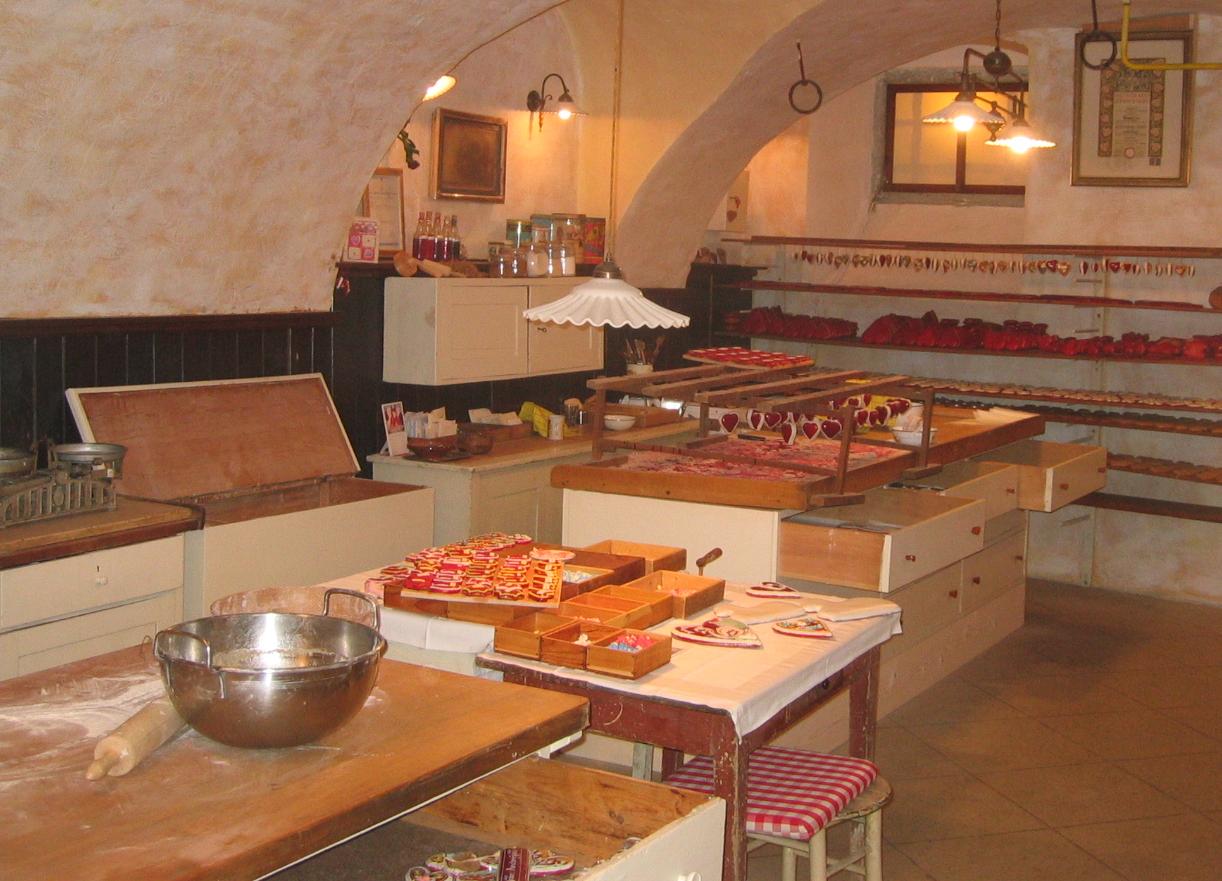Licitar on:
[Wikipedia]
[Google]
[Amazon]
Licitars (; hr, licitarska srca; sl, lectova srca) are colorfully decorated biscuits made of sweet honey dough that are part of
 The tradition of making and giving Licitars stretching as far back as the 16th century. Licitar makers, known as ''Medičari'', were highly regarded in society, and their Licitars very much sought after (licitars were more sentimental than giving a bouquet of roses). Even today the tradition is kept alive by a select few who covet the art in family secrecy, and their methods of production have scarcely changed.
The tradition of making and giving Licitars stretching as far back as the 16th century. Licitar makers, known as ''Medičari'', were highly regarded in society, and their Licitars very much sought after (licitars were more sentimental than giving a bouquet of roses). Even today the tradition is kept alive by a select few who covet the art in family secrecy, and their methods of production have scarcely changed.Licitar; toplo srce hrvatskoga puka
/ref> One Licitar still takes over a month to make. Licitars became famous due to their being sold at the
 Licitars are made using traditional ingredients, methods and devotion. Their ingredients are simple (honey, flour, eggs, water and natural colours) but their preparation is long. The dough matures for a few days, then is shaped and baked and left for two weeks to dry. Colouring is the next step after which they are left to dry again for two weeks. Once dry the licitars are finally decorated and again left to dry for a week.
Traditionally, Licitars are 100% handmade and usually decorated with a swirling outline, small flowers and sometimes a small mirror. Since they are made of honey dough and natural products, they can be edible before certain decorations are done.
Licitars are often erroneously referred to as gingerbread, although they do not actually contain ginger.
Licitars are made using traditional ingredients, methods and devotion. Their ingredients are simple (honey, flour, eggs, water and natural colours) but their preparation is long. The dough matures for a few days, then is shaped and baked and left for two weeks to dry. Colouring is the next step after which they are left to dry again for two weeks. Once dry the licitars are finally decorated and again left to dry for a week.
Traditionally, Licitars are 100% handmade and usually decorated with a swirling outline, small flowers and sometimes a small mirror. Since they are made of honey dough and natural products, they can be edible before certain decorations are done.
Licitars are often erroneously referred to as gingerbread, although they do not actually contain ginger.
www.licitarheart.com
Licitar Recipe
Croatian cuisine Slovenian cuisine Slovenian culture Masterpieces of the Oral and Intangible Heritage of Humanity Culture in Zagreb
Croatia
, image_flag = Flag of Croatia.svg
, image_coat = Coat of arms of Croatia.svg
, anthem = "Lijepa naša domovino"("Our Beautiful Homeland")
, image_map =
, map_caption =
, capit ...
and Slovenia
Slovenia ( ; sl, Slovenija ), officially the Republic of Slovenia (Slovene: , abbr.: ''RS''), is a country in Central Europe. It is bordered by Italy to the west, Austria to the north, Hungary to the northeast, Croatia to the southeast, an ...
's cultural heritage. They are a traditional symbol of the Croatian capital Zagreb
Zagreb ( , , , ) is the capital and largest city of Croatia. It is in the northwest of the country, along the Sava river, at the southern slopes of the Medvednica mountain. Zagreb stands near the international border between Croatia and Slov ...
. They are used as an ornamental gift, often given at celebrations of love such as weddings and Valentine's Day
Valentine's Day, also called Saint Valentine's Day or the Feast of Saint Valentine, is celebrated annually on February 14. It originated as a Christian feast day honoring one or two early Christian martyrs named Saint Valentine and, thr ...
. At Christmas time, the city of Zagreb and the Christmas tree in the main square in particular are festooned with thousands of licitar hearts.
In 2010, UNESCO
The United Nations Educational, Scientific and Cultural Organization is a specialized agency of the United Nations (UN) aimed at promoting world peace and security through international cooperation in education, arts, sciences and culture. It ...
added the ''Gingerbread craft from Northern Croatia'' to the "Representative List of the Intangible Cultural Heritage" for Croatian culture.
History and tradition
 The tradition of making and giving Licitars stretching as far back as the 16th century. Licitar makers, known as ''Medičari'', were highly regarded in society, and their Licitars very much sought after (licitars were more sentimental than giving a bouquet of roses). Even today the tradition is kept alive by a select few who covet the art in family secrecy, and their methods of production have scarcely changed.
The tradition of making and giving Licitars stretching as far back as the 16th century. Licitar makers, known as ''Medičari'', were highly regarded in society, and their Licitars very much sought after (licitars were more sentimental than giving a bouquet of roses). Even today the tradition is kept alive by a select few who covet the art in family secrecy, and their methods of production have scarcely changed./ref> One Licitar still takes over a month to make. Licitars became famous due to their being sold at the
Marian shrine
A shrine to the Virgin Mary (or Marian shrine) is a shrine marking an apparition or other miracle ascribed to the Blessed Virgin Mary, or a site on which is centered a historically strong Marian devotion. Such locales are often the destinatio ...
of Marija Bistrica
Marija Bistrica () is a village and municipality in the Krapina-Zagorje County in central Croatia, located on the slopes of the Medvednica mountain in the Hrvatsko Zagorje region north of the capital Zagreb. The municipality has 5,976 inhabitants, ...
(near Zagreb) to which pilgrims visited St Mary of Bistrica for the Assumption or St Margaret's Day. Although not a religious symbol, licitars were often bought to take home as a reminder of their long and sometimes arduous journey to Zagorje
Hrvatsko Zagorje (; Croatian Zagorje; ''zagorje'' is Croatian for "backland" or "behind the hills") is a cultural region in northern Croatia, traditionally separated from the country's capital Zagreb by the Medvednica Mountain. It compris ...
. Licitars' simple shape and attractive colour and decorations were a keen souvenir to show their families and neighbours when they came back.
Ingredients and preparation
Modern uses
In modern times, Licitars are traditional Croatian and Slovenian souvenirs (and can be found in all Croatian and Slovenian airports and in many tourist gift shops), Christmas tree decorations, wedding favours for guests, business gifts, many other ornamental purposes, and is still given as a way of showing your affection to the ones you love.See also
*Culture of Croatia
The culture of Croatia has roots in a long history: the Croatian people have been inhabiting the area for fourteen centuries. Linguistic anthropological evidence suggests Croats originated from orth Iran There are important remnants of the ear ...
* Culture of Slovenia
Among the modes of expression of the culture of Slovenia, a nation-state in Central Europe, are music and dance, literature, visual arts, film, and theatre. A number of festivals take place, showcasing music and literature.
Dance
Ballet
Pi ...
* Lebkuchen
(), or , are a honey-sweetened German cake molded cookie or bar cookie that has become part of Germany's Christmas traditions. It is similar to gingerbread.
Etymology
The etymology of ''Leb-'' in the term ''Lebkuchen'' is uncertain. Prop ...
References
External links
{{Commons categorywww.licitarheart.com
Licitar Recipe
Croatian cuisine Slovenian cuisine Slovenian culture Masterpieces of the Oral and Intangible Heritage of Humanity Culture in Zagreb